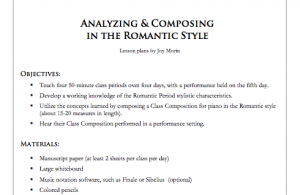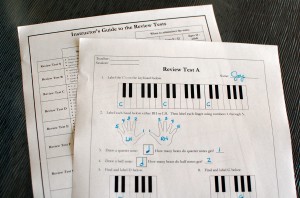 Just added to the Printables > Lesson Plans page:
Just added to the Printables > Lesson Plans page:
Lesson Plans & Worksheets: Analyzing & Composing Music in the Romantic Style
A few months ago, I used these lesson plans during a piano camp where I taught Theory & Composition classes. This camp is unusual in that it gives the students a chance to work on ensemble music with their fellow campers. In addition, all the ensemble music are original compositions — composed just for our campers.
In the lesson plans I made, I tried to incorporate both the emphasis on composition and the topic of the Music History classes (taught by another instructor; this year, focusing on the Romantic Period). So, this year’s lesson plans are all about learning how to compose music in the Romantic style. By the end of the week, the class had created a Class Composition for piano which was performed for all to hear at the camp recital! The pieces were humorous, yet surprisingly sophisticated. Perhaps later on, I’ll post an example of a composition they created, if that would be helpful to anyone.
The lesson plans are designed for classes of 4 – 6 students ranging in ages about 9 to 15, but I’m sure they could be adapted to suit other ages and groups of students. Enjoy! Let me know how they work for you.
 Analyzing & Composing in the Romantic Style - Lesson Plans & Worksheets (1.0 MiB, 36,508 hits)
Analyzing & Composing in the Romantic Style - Lesson Plans & Worksheets (1.0 MiB, 36,508 hits)




 If you navigate over to the
If you navigate over to the 
